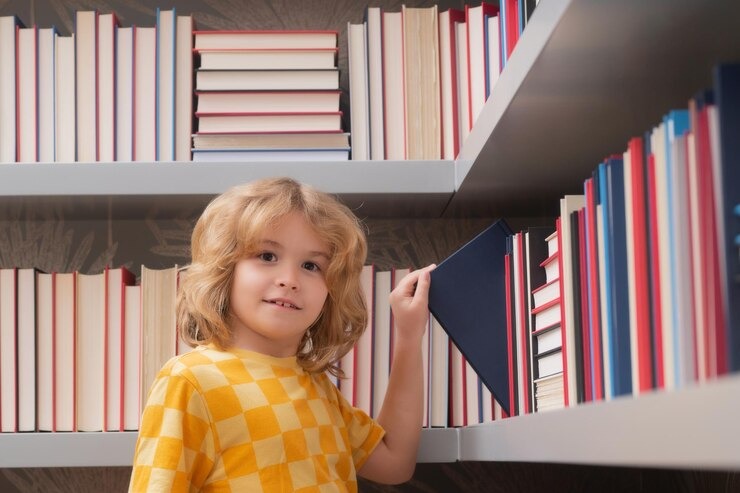Picture this: a quiet room, a low bookshelf just within arm’s reach of a curious five-year-old, and a little stack of pages whispering tales of dragons, planets, and faraway friends. That’s a seed. A home library isn’t just a stack of books; it’s a space where imagination grows. According to a 2020 study by the Australian National University, children who grow up in homes with more than 80 books tend to perform better academically—even later in life.
But here’s the tricky bit: with thousands of children’s titles on the market, where do you start? There’s no one-size-fits-all formula. Some kids fall for rhyme; others crave facts. Some need quiet, empathetic stories; others demand action. Still, a well-rounded home library can give any child the foundation for a lifelong love of reading.
Start With the Staples: Picture Books That Shape Minds
Ah, picture books. They’re more powerful than they appear. The color. The rhythm. The sly messages tucked beneath silly plots. For toddlers and preschoolers, these books are the bedrock.
- “Where the Wild Things Are” by Maurice Sendak – Wildness, rebellion, homecoming.
- “The Very Hungry Caterpillar” by Eric Carle – Days of the week, metamorphosis, and the oddly satisfying crunch of food.
- “Goodnight Moon” by Margaret Wise Brown – Soft repetition. Comfort. A ritual, not just a story.
Don’t underestimate the value of re-reading. Children thrive on repetition—it builds memory and fluency. One 2013 study from the University of Sussex found that toddlers who hear the same book multiple times learn new words faster than those who hear many different books just once.
Early Readers: The Bridge Between Listening and Independence
You know the stage. Words are just beginning to make sense. Sentences are wobbly but starting to stick. That’s when early readers step in.
- Dr. Seuss’s classics – The rhythm and rhymes are ideal.
- “Frog and Toad” by Arnold Lobel – Short sentences, subtle humor, and deep friendship.
- “Little Bear” by Else Holmelund Minarik – Whimsy with a mother’s warmth.
This is where confidence blooms. Don’t rush it. Celebrate even the smallest victory. And don’t panic if a child picks the same book 23 nights in a row. That’s normal.
Chapter Books: Stretching Attention Spans, Opening New Worlds
Chapter books crack open a door to longer stories, deeper plots, and unforgettable characters. They’re often a child’s first real taste of story arcs and cliffhangers.
Consider these essentials:
- “Charlotte’s Web” by E.B. White – Love, loss, and the enduring power of words.
- “Matilda” by Roald Dahl – Intelligence, rebellion, and justice served with a touch of magic.
- “The Boxcar Children” by Gertrude Chandler Warner – Independence, mystery, and resilience.
If you don’t want to buy books that your child might not even touch, you can read free novels online. Anyone who has the FictionMe app and an iPhone has the opportunity to read novels online, which means almost everyone. The app has thousands of free novels online in various genres and you can browse through them as much as you like. When a child has access to an unlimited number of iOS novels, they can choose what is closest to them. The main problem with reading novels is gone – choosing only from what is at home or in the store. Your budget does not matter when you read novels online for free.
Don’t Forget Non-Fiction: Books That Feed the “Why” Questions
Kids are natural scientists. Constant “why” machines. So give them facts. But make them beautiful, engaging, and digestible.
- “National Geographic Little Kids First Big Book of Why” – It answers questions you haven’t even thought to ask.
- “What If You Had Animal Teeth?” by Sandra Markle – Weird. Fun. Factual.
- Biography series like “Who Was…?” – Perfectly sized introductions to historical figures.
Non-fiction isn’t just for school. It’s for awe. For staring at the stars or a spider and thinking: “Wow. Tell me more.”
Representation Matters: Books That Reflect All Kinds of Children
Here’s something easy to overlook—but vital: diversity. A bookshelf should be a reflection of the world, not a sliver of it. Children need to see themselves in stories. They also need to see others.
- “Last Stop on Market Street” by Matt de la Peña – City life, kindness, and perspective.
- “Hair Love” by Matthew A. Cherry – A tender celebration of Black fatherhood and natural hair.
- “Julian is a Mermaid” by Jessica Love – Identity, acceptance, and joy.
Make sure your collection includes a range of voices: different races, family structures, genders, abilities. Not as a checklist, but as an ethos.
Series, Serials, and Bookworms in the Making
Some children will latch onto a single series and read it obsessively. That’s not a rut—it’s a runway.
- “Magic Tree House” by Mary Pope Osborne – Time travel and history.
- “Diary of a Wimpy Kid” by Jeff Kinney – Humor, school life, relatability.
- “Percy Jackson” by Rick Riordan – Mythology meets modern life.
A series provides continuity and comfort. Each new book is like coming home.
Final Touches: How to Curate and Evolve the Collection
Bookshelves shouldn’t gather dust. Rotate titles. Make seasonal displays. Bring in library finds. Donate ones that have been outgrown (unless they hold deep sentimental value—then save them like treasures).
Pro tip: Face books outward. Covers, not spines. It’s more inviting. Think bookstore, not storage unit.
Keep the space low, reachable. Add a cozy reading nook. A bean bag. A corner with light. Reading isn’t just intellectual—it’s sensory.
The Long Game: Lifelong Readers Are Made, Not Born
Let’s get real. Not every child will be a “bookworm” from day one. Some resist. Some struggle. Some seem disinterested. That’s okay. The goal isn’t to force reading—it’s to plant the idea that books are always there. Waiting. Ready.
One final number: according to the OECD, children who read for pleasure are more likely to have higher literacy scores than those who don’t, regardless of their socio-economic background. Reading is one of the greatest equalizers.
So build that library. Slowly. Lovingly. Intentionally. It’s not about quantity. It’s about the invitation to open a book and step into another world—any time, any day. That, right there, is magic.



